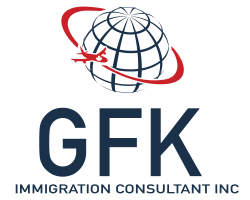
Canada PR: 7 common pathways
Canada’s allure as a prime destination for immigrants continues to grow, with the country’s goal to welcome 395,000 new permanent residents in 2025.
Although this quota has been reduced from 500,000, it still offers fair chances to get Canadian permanent residency in 2025.
This year, the Canadian immigration department’s focus is on transitioning temporary residents inside Canada to permanent residents along with welcoming new immigrants from outside the country.
Here’s a detailed look at the top seven immigration programs to help you navigate your journey to becoming a Canadian permanent resident.
Table of Contents
1. Express Entry: The Fast Track to PR
Express Entry stands out as Canada’s flagship immigration system, designed to expedite the process for skilled workers looking to contribute to the Canadian economy.
Here’s how it works:
- Eligibility: You must qualify under one of three programs:
- Federal Skilled Worker Program (FSWP) for professionals with specific education and work experience.
- Canadian Experience Class (CEC) for individuals with Canadian work experience.
Application Process: If you qualify, then create a free online profile where you’ll be scored by the Comprehensive Ranking System (CRS).
High scorers receive an Invitation to Apply (ITA) for permanent residency, often within six months.
Numbers: Out of the 395,000 targets, Express Entry aims to invite 124,680 immigrants, with a significant portion (82,980) already in Canada on temporary status.
Costs: Once invited to apply for permanent residency, the process involves official fees of $1,525 CAD for individuals and $3,050 CAD for couples, plus proof of funds ($14,690 for singles, $18,288 for couples).
Challenges: The CRS cut-off can be high, but even if you don’t initially qualify for an ITA, you might be picked up by a province through the Provincial Nominee Program (PNP).
2. Provincial Nominee Programs (PNPs): Tailored to Local Needs
For those with a specific interest in settling in a particular Canadian province, PNPs offer a personalized pathway:
Variety: Each Canadian province and territory, except Nunavut, runs its own PNP with unique criteria tailored to local economic needs. Notable programs include:
- Alberta Advantage Immigrant Program (AAIP)
- British Columbia Provincial Nominee Program (BCPNP)
- Ontario Immigrant Nominee Program (OINP)
- Manitoba Provincial Nominee Program (MPNP)
- New Brunswick Provincial Nominee Program (NB PNP)
- Nova Scotia Provincial Nominee Program (NS PNP)
- Newfoundland and Labrador PNP
- Northwest Territories PNP
- Prince Edward Island PNP
- Saskatchewan Immigrant Nominee Program (SINP)
- Yukon PNP
Eligibility: Often requires a connection to the province or a job offer, but some streams focus solely on filling labour market gaps.
This year, the PNP quota has been slashed by almost 50% for all the provinces so it might be harder to get permanent residency through one of the PNPs.
Processing times vary by province, but post-nomination, you apply for federal permanent residence, potentially through Express Entry.
Costs: Similar to Express Entry, with additional fees in some provinces like Ontario charging up to $1,500 CAD.
3. Business Immigration: For Entrepreneurs and Investors
If you’re looking to establish or invest in a business in Canada, consider:
Start-Up Visa: Ideal for innovative entrepreneurs. Requires support from Canadian investors or business incubators and active business management in Canada.
Click here to know more about the Start-Up Visa Program.
Provincial Business Programs: Each province has tailored programs for entrepreneurs looking to contribute to local economies.
Self-Employed Programs: Currently paused until January 2027, but Quebec maintains its version for those who can create their own employment.
Target: Canada plans to welcome 5,000 through business initiatives in 2025, each with varying investment thresholds.
4. Family Sponsorship: Reuniting Loved Ones
Canada’s family sponsorship programs are designed to keep families together:
Spouses, Partners, and Children: Canadian citizens or permanent residents can sponsor their spouses or common-law partners or conjugal partners or child(ren) via family sponsorship.
Processing times are around a year, with work permit options during application.
Fees: Approximately $1,205 CAD for family sponsorship, with additional fees for Quebec residents.
Target: Aims to welcome 70,000 through spousal and child sponsorship in 2025 and will grant permanent residency to 24,500 parents or grandparents (PGP) applications that are already under processing.
Parents and Grandparents (PGP): Be careful if someone offers you this program since no new applications are being accepted in 2025; The Super Visa allows temporary visits for up to 5 years for parents and grandparents.
5. Atlantic Immigration Program (AIP): A Regional Solution
Designed to address labour shortages in Atlantic Canada:
Eligibility: Targets skilled workers and international graduates with experience or education from Atlantic Canada, offering pathways to permanent residency.
Participating Provinces: New Brunswick, Nova Scotia, Prince Edward Island, and Newfoundland and Labrador.
Goal: To approve 5,000 permanent residency applications in 2025.
Benefits: Includes job offers from designated employers and no need for proof of funds for those already working in Canada.
Click here for detailed information on the Atlantic Immigration Program.
6. New Canada Caregivers Program
The Home Care Worker Immigration Pilots, replacing the discontinued Home Child Care Provider Pilot and Home Support Worker Pilot, will open on March 31, 2025.
Announced by Marc Miller on June 3, 2024, these highly anticipated programs aim to streamline permanent residency pathways for caregivers.
The new caregiver pilots are expected to accept 2,750 applications in 2025, maintaining similar levels.
The new programs offer a simplified process for skilled caregivers to gain permanent residency, granting PR status immediately upon arrival to eliminate delays and uncertainty.
They also allow caregivers to work with organizations providing temporary or part-time care for semi-independent individuals or those recovering from illness or injury, enhancing employment flexibility.
Eligibility requires:
- a minimum Canadian Language Benchmark (CLB) level 4 (equivalent to IELTS: 4 in writing/speaking, 4.5 in listening, 3.5 in reading),
- a Canadian high school diploma equivalent verified by an Education Credential Assessment (ECA),
- recent and relevant caregiving work experience, and
- a full-time job offer from a Canadian family or in the home care sector.
These enhancements aim to make the immigration process more accessible and efficient for caregivers in Canada.
Click here for full details on new caregiver programs.
7. New Rural Immigration Pilots
On January 30, 2025, Canada launched two permanent residency pilots, the Rural Community Immigration Pilot (RCIP) and the Francophone Community Immigration Pilot (FCIP).
These initiatives aim to address demographic decline and labour shortages in regions often overlooked by immigrants favouring urban centres like Toronto and Vancouver.
The RCIP, building on the success of the Rural and Northern Immigration Pilot, supports 14 rural communities such as Pictou County, NS, and North Bay, ON, by connecting skilled workers with local job opportunities.
Eligibility requires:
- a valid job offer from a designated employer,
- at least one year of related work experience in the past three years (with specific TEER category matches),
- meeting language requirement of (CLB level 4–6), and
- education requirements (Canadian high school diploma or equivalent via ECA).
Click here for detailed information on Rural immigration pilots.
International students who graduated from a local public post-secondary institution may be exempt from work experience requirements under certain conditions.
Applicants must also prove sufficient funds for settlement based on family size.
The FCIP, focusing on Francophone communities outside Quebec, aims to enhance French-speaking populations in six areas like the Acadian Peninsula, NB, and Sudbury, ON, to preserve linguistic identity and support economic growth.
It aligns with Canada’s bilingualism goals and the Welcoming Francophone Communities initiative, offering additional integration support.
Both pilots are designed to bring talent and diversity to underserved regions, fostering sustainable growth and cultural preservation.
Navigating the Process
Canada PR: 7 common pathways
Each of these programs has its nuances, and while the journey to Canadian residency can be complex, the rewards of living in one of the world’s most welcoming countries are immense.
Here are some tips for potential applicants:
- Stay Updated: Immigration laws and targets can change. Keep abreast of updates from IRCC or through consultations with immigration lawyers or consultants.
- Prepare Thoroughly: Gathering all necessary documentation, understanding the language requirements, and proving financial stability are crucial steps.
- Consider Your Profile: Each program suits different backgrounds and career stages. Choose based on where your skills, qualifications, and personal circumstances align best.
- Engage with Communities: Joining forums or groups for immigrants can provide real-life insights and support through the process.
- Beware of fraud: Always stay cautious to avoid fraud by verifying the information with the official IRCC website.
Moving to Canada isn’t just about changing your address; it’s about embracing a new life in a country known for its diversity, quality of life, and opportunities.
With these five immigration programs, you’re not just looking at a pathway to residency but also opening a door to a future filled with possibilities.
Whether you’re a skilled worker, an entrepreneur, or looking to reunite with family, Canada has a program tailored for you.
Start your journey today and become part of Canada’s vibrant mosaic.
What is the new immigration levels plan for 2025?
Canada has set a target of landing 395,000 new permanent residents in 2025, a reduction from the previously set target of 500,000 for 2025.
This includes temporary residents already inside Canada transitioning to permanent residents.
GFK Immigration
Gboyega Esan RCIC R708591
Phone: +1 (647) 225-0092
#studyincanada #studyabroad #canada #studyinuk #studyinaustralia #ielts #studentvisa #studyinusa #studyvisa #immigration #canadavisa #visa #education #internationalstudents #overseaseducation #study #canadaimmigration #highereducation #studyoverseas #canadastudyvisa #immigrationconsultant #australia #university #workpermit #canadapr #expressentry #studyineurope #immigrationcanada #studyingermany
